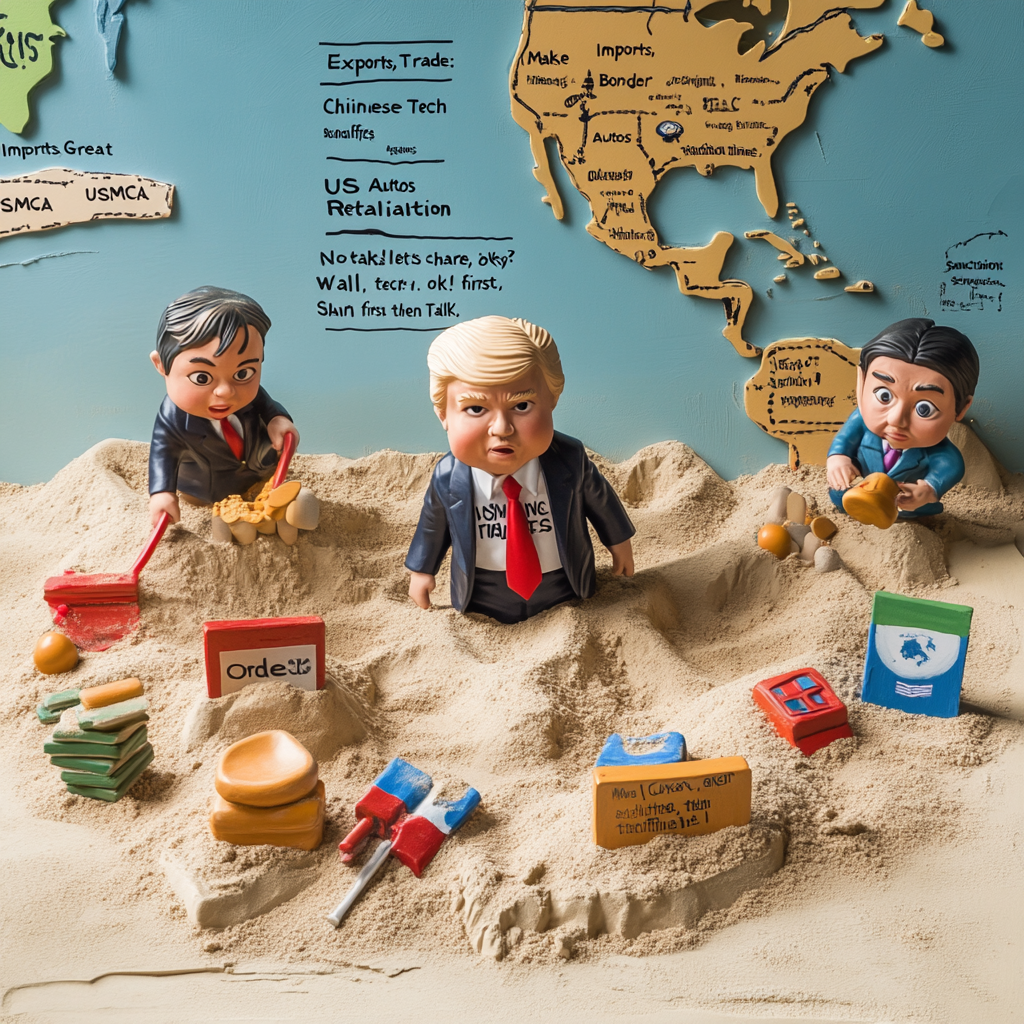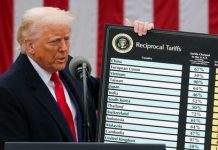 Key Points
Key Points-
It seems likely Trump will announce reciprocal tariffs on April 2, targeting the EU, China, and possibly Japan, with sectoral tariffs on steel, aluminum, and semiconductors, based on recent statements and investigations.
-
Trading partners may retaliate with tariffs on U.S. agriculture, energy, and iconic exports, potentially devaluing currencies to offset impacts, with Canada, Mexico, China, and the EU leading responses.
-
Portfolio positioning should focus on shorting autos, agriculture, and tech for tariff exposure, while buying utilities, staples, gold, and Treasuries for stability, with VIX calls for volatility hedges, given market uncertainty.
Tariff Announcements and Reactions
Trump, already known for aggressive trade policies in his first term, will unveil “reciprocal tariffs” on April 2, 2025, at 4 p.m. EDT, targeting countries with high U.S. trade deficits like the EU (20% on goods), China (further hikes post 20%), and possibly Japan for their currency practices. Sectoral tariffs on steel, aluminum, semiconductors, and energy are also expected, given recent Commerce Department investigations due today. His “Fair and Reciprocal Plan” from February and threats to BRICS nations for de-dollarization indicate a broad, negotiation-driven approach, but exemptions (like autos) suggest some flexibility to avoid full escalation on day one.

The evidence leans toward Canada and Mexico expanding tariffs on U.S. agriculture and energy if April 2 exemptions end, given their $20B retaliation already. China may shift sourcing to Russia and Brazil, escalating tech export controls, while the EU could retaliate on April 13 with 50% tariffs on American items like whiskey and motorcycles, possibly devaluing the euro as well. BRICS nations might slow de-dollarization to avoid immediate tariffs, preserving trade.
 Why Canada and Mexico May Escape Full Targeting
Why Canada and Mexico May Escape Full Targeting
-
Economic Interdependence: USMCA, signed in 2020, covers $1.3 trillion in annual trade, per NY Times, with Canada and Mexico as top U.S. export markets, per Census Bureau data. Full tariffs risk retaliation—Canada threatened $155B, per NY Times, hitting U.S. farmers and energy, per Reuters. This economic cost, estimated at 2% higher inflation and 142,000 job losses, per Tax Foundation, is a strong deterrent against Trump taking unilateral action.
-
Political Costs: Retaliation would hurt swing states like Michigan and Wisconsin, where auto and ag jobs are key, per Politico. Canadian PM Justin Trudeau’s fentanyl spat, shows tension, but Trump’s “somewhat friendly” call, per White House, suggests he’s wary of alienating allies, given NATO ties, per Chatham House.
-
Auto Industry Pressure: Ford, GM, and Stellantis lobbied hard, per NBC News, with CEOs like Jim Farley warning of “devastating” impacts, per NPR. The UAW’s “active negotiations,” suggest Trump’s listening to labor, given election promises. The March 5 exemption, per White House, for a month, indicates he’s prioritizing this sector.
-
Negotiation Leverage: Trump’s distributive style, per our earlier Honig insights, seeks wins, but with Canada/Mexico, he’s using tariffs to negotiate, not destroy. His call with Mexican President Claudia Sheinbaum, led to a broad lift by March 6, suggesting he’s open to deals, per Forbes.

 Conclusion: A Strategic Pause
Conclusion: A Strategic Pause-
Short/Sell: Autos (Ford, GM) for supply chain costs, agriculture (Deere, ADM) for China/Canada retaliation, tech (Nvidia, Super Micro) for chip export risks—sectors most exposed.
-
Buy/Hold: Utilities (XLU), staples (XLP) for yield stability, gold (GLD) for currency war hedges, Treasuries (TLT) for safe-haven demand as yields fall.
-
Options: Buy VIX calls for volatility spikes if retaliation escalates, given historical market drops and uncertainty.
Deeper Dive on Tariff Predictions and Portfolio Strategy
-
-
Reciprocal Tariffs on April 2: Likely 20% on EU goods, per Forbes, matching their tariffs, and further hikes on China (post-20%) for semiconductors and EVs, given May 2024 Biden hikes retained. Sectoral tariffs on steel, aluminum (effective March 12, per CLA), and energy (e.g., 25% on Venezuelan oil buyers, per Trade Compliance) seem imminent, given Commerce investigations.
-
Negotiation Leverage: Threats to BRICS nations for de-dollarization may be delayed, used as bargaining chips, given their economic ties. Japan could face currency-related tariffs, given Trump’s yen-weakening accusations.
-
 This aligns with Trump’s pattern—big threats (e.g., 60% on China, 20% universal, per PBS), then exemptions (autos got a month, per Reuters). Psychologically, he seeks media attention and voter approval, so expect announcements to maximize impact, but with wiggle room for talks.
This aligns with Trump’s pattern—big threats (e.g., 60% on China, 20% universal, per PBS), then exemptions (autos got a month, per Reuters). Psychologically, he seeks media attention and voter approval, so expect announcements to maximize impact, but with wiggle room for talks.|
Sector
|
Impact from Tariffs
|
Recommended Action
|
Reasoning
|
|---|---|---|---|
|
Autos (F, GM)
|
Supply chain costs up 25%, per Reuters
|
Short/Sell
|
High exposure to Canada/Mexico parts, retaliation risks.
|
|
Agriculture (DE, ADM)
|
China, Canada tariffs hit soybeans, corn, per NPR
|
Short/Sell
|
Export markets shrinking, input costs rising from steel tariffs, per CLA.
|
|
Tech (NVDA, SMCI)
|
Chip export controls from China, per Chatham House
|
Short/Sell
|
Semiconductor reliance on China, tariff hikes on inputs, per Tax Foundation.
|
|
Utilities (XLU)
|
Stable, low trade exposure, per J.P. Morgan
|
Buy/Hold
|
Yield play in growth scare, insulated from trade wars, per CNBC.
|
|
Staples (XLP)
|
Resilient to inflation, per J.P. Morgan
|
Buy/Hold
|
Defensive, consumer essentials hold up, per earlier Beige Book data.
|
|
Gold (GLD)
|
Currency war hedge, dollar weakens, per PBS
|
Buy/Hold
|
Safe haven as tariffs spark devaluations, per NY Times.
|
|
Treasuries (TLT)
|
Yields fall on growth fears, per Reuters
|
Buy/Hold
|
Safe haven demand rises, given S&P earnings cuts, per Barclays.
|







